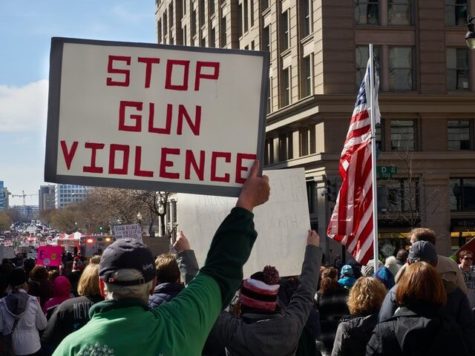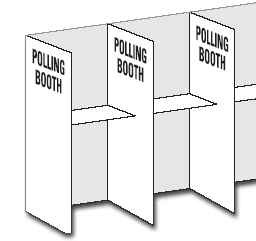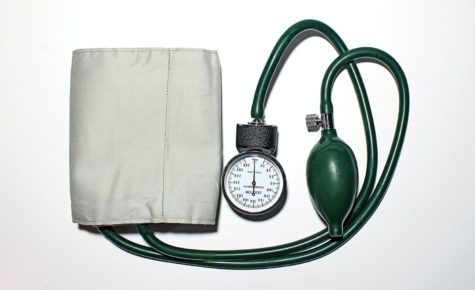Editorial: Stay-at-home orders justified
June 10, 2020
As the COVID-19 pandemic rages and further affects our communities, different states have had different responses and outcomes. Some states, like Michigan, have implemented strict stay-at-home orders and shutdowns to protect their citizens and enforce social distancing measures. On the other hand, states like Iowa have not issued blanket lockdowns to prevent the spread of the virus.
The Michigan stay-at-home order and other large-scale shutdowns, while necessary to protect the majority, would be considered a restriction of liberty. However, the current state of a public health emergency is justified by uncertain risk. Slowing the spread of the virus is a legitimate use of government power. A major 1905 Supreme Court case involving vaccine laws, Jacobson v. Massachusetts, ruled that a state’s “police power” legitimately includes such reasonable regulations as needed to “protect the public health.” Any other blanket shutdown, without a viable cause, would be considered unconstitutional.
Courts will likely uphold these shutdowns due to the extreme uncertainty surrounding the pandemic, as they are reluctant to second-guess officials acting to stem a potential emergency. Nonetheless, the longer that lockdowns continue, the more cases are likely to be filed challenging the necessity of stay-at-home orders.
However, Iowa has had a slower response compared to Michigan. Iowa has not issued a mandatory stay-at-home order. Instead, several restrictions were put in place that closed or limited several businesses. Iowa reached a peak of reported cases on April 29th, 26 days after Michigan’s peak on April 3rd. Out of the 3.17 million people living in Iowa, 22,111 reported contracting COVID-19, which is about 0.63 percent of the state’s population. Michigan has a total of 58,999 out of 9.98 million reported COVID-19 cases, or about 0.58 percent of the state’s population.
Iowa has a higher percentage of reported cases per person, with 23 percent of infections being health care workers. A study from the University of Iowa found that issuing a stay-at-home order in Iowa may have prevented up to 30 percent of COVID-19 cases. In the counties examined, researchers estimate that an excess of 217 cases were reported compared to what could have been avoided if a shutdown had been implemented. If Iowa had implemented a stay-at-home order earlier, infections could have been prevented.
Iowa Gov. Kim Reynolds’ handling of the state’s coronavirus response has been met with mixed reviews. Dr. Anthony Fauci, a key figure in the federal government’s coronavirus response, applauded Iowa’s approach.
“It’s interesting that functionally, even though they have not given the strict stay at home — what they are doing is functionally equivalent to that,” Fauci said during a White House press briefing. “I want to make sure people understand that just because they don’t have a very strict stay-at-home order, they have in place a lot of things that are totally compatible with what everyone else is doing.”
Some have argued that Reynolds’ approach was too chaotic and that a clear directive would have been more effective. The Iowa Medical Society and the Iowa Board of Medicine are among the groups that have criticized Reynolds, calling on her to take more aggressive steps to shut down nonessential businesses and gatherings. The mayors of Des Moines, Iowa City and Cedar Rapids have also called for stricter measures.
Despite calls for a stay-at-home order, Reynolds has argued a targeted mitigation strategy is more effective than a large shutdown.
“We must live with the COVID-19 virus activity without letting it govern our lives,” Reynolds said in a press conference.
However, the aforementioned University of Iowa study shows that stay-at-home orders are necessary to prevent future infections. A large blanket shutdown sends a clear message about the severity of the pandemic. If instructions are unclear, people tend to make up their own rules and social pressure from others to comply plays a role as well.
Avoiding a second wave will be a priority in the coming months. Health officials warn that a new surge in cases could occur as lockdowns continue to lift and the country resumes normalcy. Continued social distancing measures are essential to help reduce disease transmission and stay-at-home orders are a vital part of that. Studies from multiple countries, including France, Germany and America all show the restrictions put in place are effective to slow the pandemic.
Michigan and Iowa both had incredibly different responses to the COVID-19 pandemic. The outcomes of their responses remain to be seen as cases continue to increase. Despite this, stay-at-home orders are justified due to the public health risk and will continue to prevent the spread of infections.

















